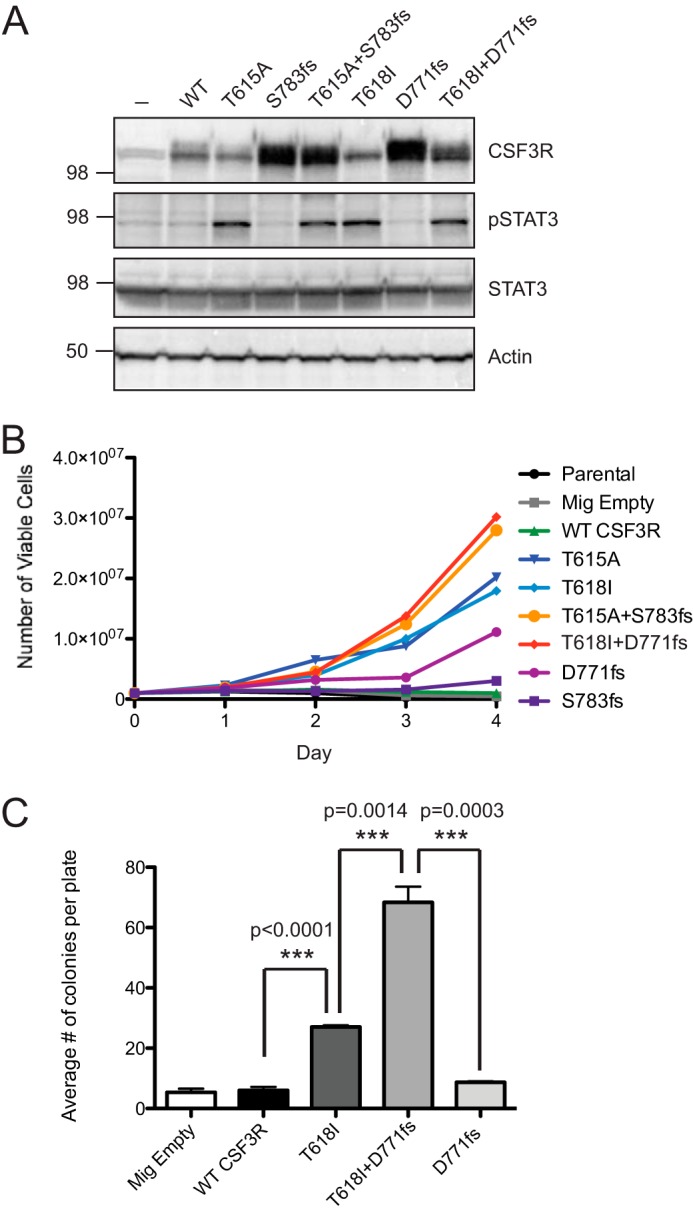FIGURE 4.

CSF3R membrane-proximal mutations have increased oncogenic potential when combined with CSF3R truncation mutations. A, CSF3R compound mutations (T615A+S783fs and T618I + D771fs) as well as the wild type and each single mutation were transfected into 293T17 cells, and whole cell lysates were subjected to immunoblot analysis using antibodies specific for CSF3R, phospho-STAT3, total STAT3, and actin. B, Ba/F3 cells expressing CSF3R individual or compound mutations were grown in medium lacking IL-3. The total number of viable cells is shown. Parental cells and cells infected with an empty vector (Mig Empty) are shown as controls. C, mouse bone marrow was infected with virus containing empty vector, wild-type CSF3R, CSF3R T618I, CSF3R D771fs, or CSF3R T618I + D771fs, and cells were plated in methylcellulose lacking CSF3 ligand. After 14 days, colonies were manually enumerated by light microscopy. Values represent mean ± S.E., n = 3. Statistical significance was assessed using one-way analysis of variance followed by Bonferroni's multiple comparison test. These experiments were performed twice with consistent results.
